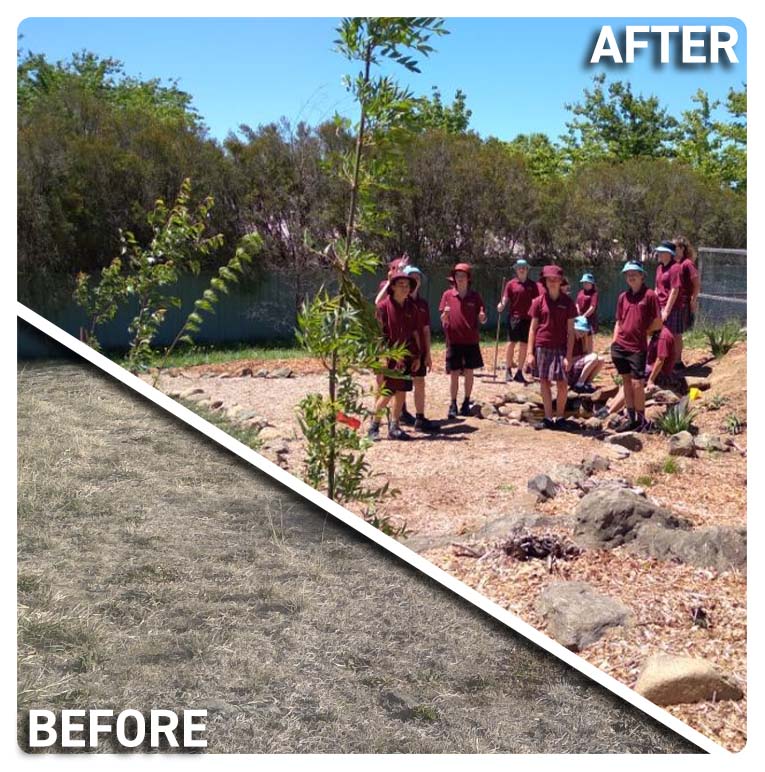To give back to the community and help Australia build a sustainable future we partnered with the Junior Landcare grants to create the Bushman’s Junior Landcare grants. The idea is to give back and help achieve our mission of Saving Australia’s Water.
If you haven’t checked out our first blog regarding the Bushman’s Junior Landcare grants you can check it out here. A quick recap is that Bushmans funded 15 schools across Australia with grants of up to $1000. These grants were to encourage schools to play an active role in ensuring the longevity of their environment and responsibility to the land and help boost community awareness about rainwater harvesting and water conservation and biodiversity.
One of the recipients of the grants, the Snowy Mountains Christian School, decided to transform a dry, unusable patch of dirt within the school grounds, into a useable learning area and garden for current and future students. Twenty five students took part in the project and were tasked with designing the learning area and garden and implementing their design.
The students were told to think about how students in the future would use the space, how it should be designed to create an important outdoor learning area as well as a place to learn about drought tolerant flora, biodiversity and monitor the environment of different fauna. The students really enjoyed being able to plan the space and see their plans come to fruition. One of the students commented “It was great to see our design actually being put into action and that we could create a garden from scratch” and another said, “we loved getting our hands dirty.”
The students had to plan for the plants to be drought tolerant to reduce water usage and implemented mulch as a way to increase water retention. The plants were also selected to attract native birds, bees and other insects and wildlife. The students learnt about native flora and fauna and how to select the right plants for the garden and learning area. They even had to consider how the plants would be maintained during school holidays and that the plants needed to be able to survive in the extreme weather conditions in Australia.
The project was seamlessly worked into many areas of the curriculum. For example, in science students learnt about sustainability, the impact of changes in an ecosystem and biodiversity. Parallel to their learning they also observed their garden as it changed, asked questions about, and described changes in the garden. In geography, the interconnected link between humans and our impact on the environment was explored. Pairing their education with the grant project helped the students realise the importance of their own impact on the environment and that they have the potential to make positive changes to their environment.
Overall, the students planted eighty native plants in the previously unused dirt area. They rejuvenated 50 square metres of dry dirt and created a stunning native garden, a place for students to maintain and a practical learning area for students in the future where they can observe the importance of flora and fauna in maintaining a healthy environment. The students got their hands dirty, engaged in critical thinking skills when designing and implementing a sustainable garden and learnt about water conservation, sustainability and biodiversity. The end result is an improved school community as well as the knowledge of sustainability and water conservation that the students will take forward with them.






